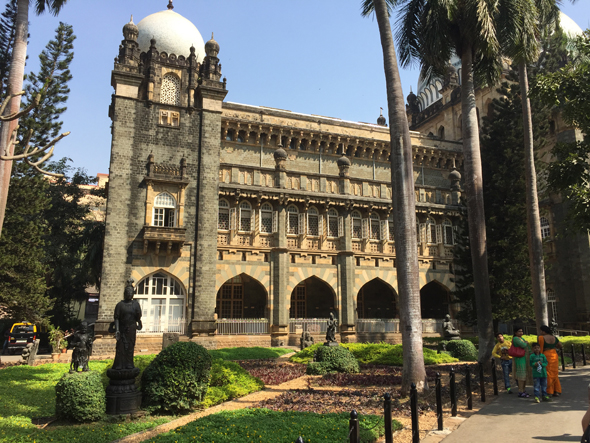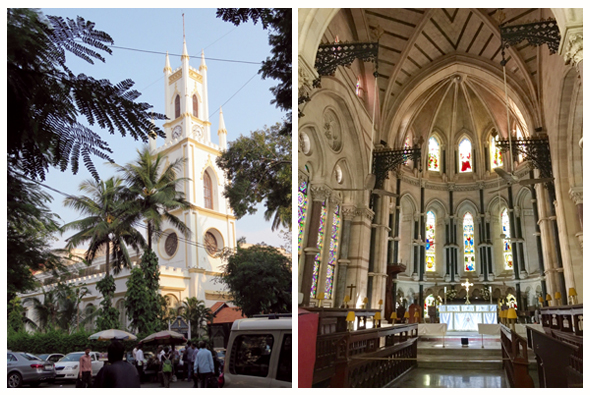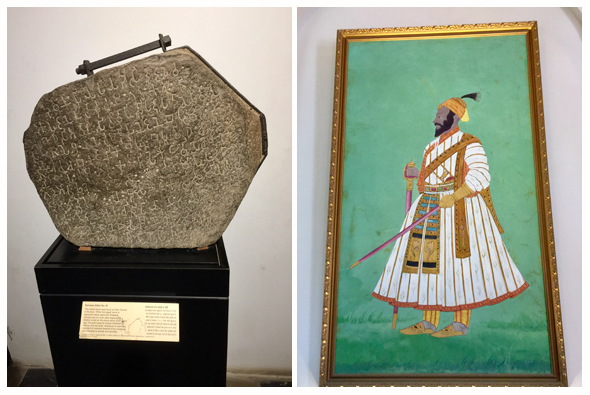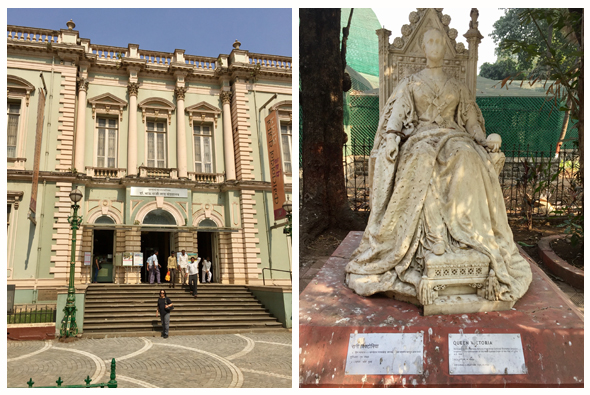Sightseeing in India Off the Beaten Path Mumbai’s British Legacy: Old Glory, New Names
Saved under Community, Current Stories, Travel
Tags: Baytown, Chhatrapati Shivaji Maharaj Vastu Sangrahalaya, Clear Lake, Cypress, Desi news, Greater Houston, Houston, Houston Desi news, India, Indian American community, Indian News, Indians in America, Indo-American News, Katy, NRI, pearland, south asia, South India, Sugar Land, Texas, USA

Regardless of its name, the Chhatrapati Shivaji Maharaj Vastu Sangrahalaya is a treasure trove of Indian antiquities. The foundation stone was laid by the Prince of Wales in 1905. He later became King George V.
By Pramod Kulkarni
On the Road: This is the sixth and final episode describing my wife Jyoti and I’s visit to India during Dec.-Jan. 2016.
After returning to Mumbai from the Konkan coast, we still had 2-3 days for sightseeing in Mumbai before returning to Houston. During past visits, we had seen the familiar sights such as Gateway of India, Elephanta caves and Chowpati beach.
To see a different facet of Mumbai, we had the help of Dr. Vijaya Gupchup, an educator and historian, who has written several books on Mumbai’s history. She is married to Dr. Vijay Gupchup, who served as principal of VJTI and pro vice chancellor of Bombay University.

St. Thomas Cathedral features a clock tower and flying buttresses. The interior is remarkable for its magnificent stained glass windows.
The Gupchups first took us to the St. Thomas Cathedral, an Anglican church at Horniman Circle. The foundation stone for the church was set in 1676, but the church was built 40 years later in 1718 during the early days of the East India Company’s raj.
These days, the St. Thomas Cathedral is perhaps one of the few remaining relics of the British colonial empire, VT train station and Gateway of India being the most prominent.

The Vastu Sangrahalaya features Ashoka’s Edict No. IX, found at Nalla Sopara near Mumbai. One of the few original paintings of Shivaji hangs near the entrance of the museum.
One of the ways the British Raj is being erased from the memories of the new generation of Indians is name changes. The city’s name itself was changed from Bombay to Mumbai in 1995. VT used to be Victoria Terminus, but now is renamed Chhatrapati Shivaji Terminus. What used to be the Prince of Wales Museum is now Chhatrapati Shivaji Maharaj Vastu Sangrahalaya.
The Gupchups took us to the Vastu Sangrahalay, which is a remarkable storehouse of India’s antiquities, including a segment of Emperor Ashoka’s edicts and sculpture of the reclining Vishnu to one of the few portraits of Chatrapati Shivaji.

The Bhau Daji Lad museum (formerly Victorial and Albert) was restored to its former glory, but a statue of the Queen is relegated to a back alley.
The other museum we visited was what was once the Victoria and Albert museum and was recently renamed the Bhau Daji Lad museum, after one of the early benefactors. This museum was restored during 2003-2007 by government and private grants. The museum has historical maps and photographs of Mumbai, tracing its origin as a cluster of seven islands.
At the back of the Bhau Daji Lad museum is an alley full of monuments and sculptures of British era personalities that used to dot Mumbai’s Fort area, including Queen Victoria, Marquis of Cornwalis and Lord Hardinge.
Maharashtrians are now reclaiming the city, highlighted by plans to build a statue of Shivaji offshore Mumbai, similar to the Statue of Liberty. What next — city dotted with modern-day rulers of India such as PM Modi and industrial baron Ambani? Why not indeed!
Readers are invited to submit their own South Asian travelogues.
